Resources
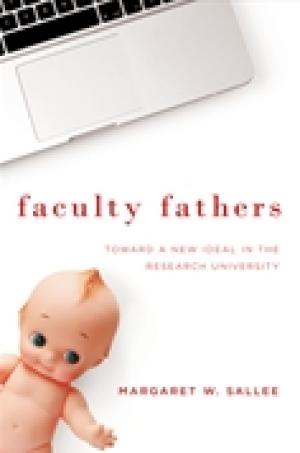
Explores the challenges faculty fathers face in navigating the demands of work and family. For the past two decades, colleges and universities have focused significant attention on helping female faculty balance work and family by implementing a series of family-friendly policies. Although most policies were targeted at men and women alike, women were intended as the primary targets and recipients. This groundbreaking book makes clear that including faculty fathers in institutional efforts is necessary for campuses to attain gender equity. Based on interviews with seventy faculty fathers at four research universities around the United States, this book explores the challenges faculty fathers—from assistant professors to endowed chairs—face in finding a work/life balance. Margaret W. Sallee shows how universities frequently punish men who want to be involved fathers and suggests that cultural change is necessary—not only to help men who wish to take a greater role with their children, but also to help women and spouses who are expected to do the same. (From the Publisher)
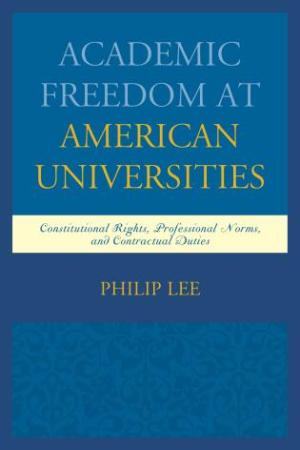
Click Here for Book Review Abstract: This book details the legal and historical development of institutional and professorial academic freedoms to better understand the relationship between these concepts. While some judges and scholars have focused on the divergence of these protections, this book articulates an aligned theory that brings both the professorial and institutional theories together. It argues that while constitutionally based academic freedom does its job in protecting both public and private universities from excessive state interference, or at the very least it asks the right questions, it is inadequate because it fails to protect many individual professors in the same way. This solution entails using contract law to fill in the gaps that constitutional law leaves open in regard to protecting individual professors. Contract law is an effective alternative to constitutional law for three reasons. First, unlike constitutional law, it covers professors at both public and private universities. Second, it allows for the consideration of the custom and usage of the academic community as either express or implied contract terms in resolving disputes between universities and professors. Third, contract law enables courts to structure remedies that take into account the specific campus contexts that give rise to various disputes instead of crafting broad remedies that may ill fit certain campus environments. The proposed reconceptualization of academic freedom merges constitutional protection for institutions and contractual protection for individual professors. This combined approach would provide a more comprehensive framework than is currently available under the predominantly constitutional paradigm of academic freedom. (From the Publisher)

Click Here for Book Review Abstract: This practical guide prepares graduate students of color for their first job in academia and offers strategies for succeeding in the early years of a tenure-track position. Through the voices of faculty who have experienced the rigors of the job search and a career in academia, Beginning a Career in Academia offers advice for graduate students of color on how to transition from graduate school to an academic position. This inclusive volume shares perspectives that vary based on gender, racial, ethnic, generational, and disciplinary backgrounds, giving readers an opportunity to reflect on successful strategies for career readiness and for dealing with marginalization. The authors provide recommendations and tips to enhance the job search, identify campus fit, prepare for the interview and negotiation process, address dynamics of of racial and gender politics, find work-life balance, and demystify the promotion and tenure process. This must-read provides candid advice and mentorship for any graduate students of color embarking on a carreer in academe. (From the Publisher)
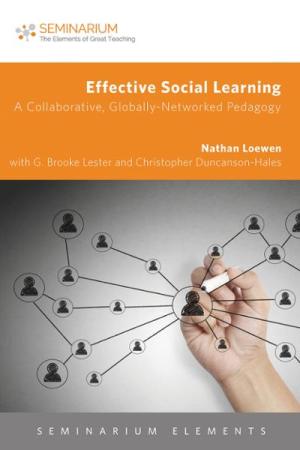
The ground of higher education is shifting, but learning ecosystems around the world have much more space than MOOCs and trendy online platforms can fill, and Loewen shows how professors have an indisputable pedagogical edge that gives them a crucial role to play in higher education. By adopting the collaborative pedagogical process in this book, professors can create effective social learning experiences that connect students to peers and professional colleagues in real time.   Loewen moves beyond surface questions about technology in the classroom to a problem best addressed by educators in bricks-and-mortar institutions: if students are social learners, how do we teach in a way that promotes actual dialogue for learning? Designing learning experiences that develop intercultural competencies puts the test to students’ social inclinations, and engagement with course material increases when it’s used to dig deeper into the specificities of their identity and social location. Loewen’s approach to interinstitutional collaborative teaching will be explored with examples and working templates for collaborative design of effective social learning experiences. This is done by collaborative dialogue with G. Brooke Lester and Christopher Duncanson-Hales. As a group, Loewen, Lester, and Duncanson-Hales create a text that extends pedagogical innovation in inspiring but practical ways. (From the Publisher)
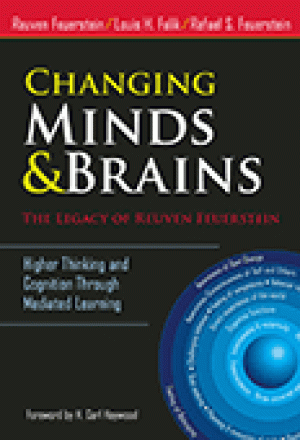
Click Here for Book Review Abstract: Decades before educators began to draw teaching and learning implications from neuroscientists’ groundbreaking findings on brain plasticiy, Reuven Feuerstein had already theorized it and developed practices for teaching and developing higher level cognition and learning for all students, even those with Down syndrome and other learning disabilities. His mediated learning, enrichment instruments, and dynamic assessment are used in urban districts in the United States and around the world to raise student achievement, success levels, and self-regulation. In this final work, Feuerstein provides a first-person reflective narrative of the implementation of mediated learning experience (MLE) past and present, including stories, new insights, observations, and newly formulated concepts on MLE and how it contributes to higher-level thinking and overcoming disability. Featuring both educational and clinical case examples, it offers a more detailed picture of the practical applications than any other publication to date. Those familiar with Feuerstein’s methods will find this book an important resource in deepening their knowledge. It is also essential reading for all educators looking for approaches that promote thinking skills that improve educational outcomes for diverse learners. Book Features: • Provides stories of Feuerstein’s inspirational journey as a teacher and learner, often working with special needs children and youth. • Relates mediated learning to contemporary learning environments • Explores theory and research on whether spiritual and behavioral practices change the brain. • Includes chapters devoted to questioning techniques and the effects of modern media access to the development of thinking skills. (From the Publisher)

Click Here for Book Review Abstract: Delineates Lacan’s theory of the four discourses as a practical framework through which faculty can reflect on where their students are, developmentally, and where they might go. University classrooms are increasingly in crisis—though popular demands for accountability grow more insistent, no one seems to know what our teaching should seek to achieve. This book traces how we arrived at our current impasse, and it uses Lacan’s theory of the four discourses to chart a path forward via an analysis of the freshman writing class. How did we forfeit a meaningful set of goals for our teaching? T. R. Johnson suggests that, by the 1960s, the work of Bergson and Piaget had led us to see student growth as a journey into more and more abstract thought, a journey that will happen naturally if the teacher knows how to stay out of the way. Since the 1960s, we’ve come to see development, in turn, only as a vague initiation into the academic community. This book, however, offers an alternative tradition, one rooted in Vygotsky and the feminist movement, that defines the developing student writer in terms of a complex, intersubjective ecology, and then, through these precedents, proposes a fully psychoanalytic model of student development. To illustrate his practical use of the four discourses, Johnson draws on a wide array of concepts and a colorful set of examples, including Franz Kafka, Keith Richards, David Foster Wallace, Hannah Arendt, and many others. “Graceful, provocative, thoughtful, and well researched, The Other Side of Pedagogy connects theory and teaching in compelling ways. This is a groundbreaking book that scholars of writing will want to read, reread, and teach.” — Joseph Harris, author of A Teaching Subject: Composition Since 1966 (From the Publisher)
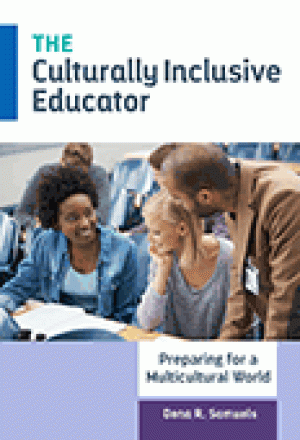
Click Here for Book Review Abstract: The Culturally Inclusive Educator asks educators to consider what they can do differently to create a welcoming, inclusive, and exciting environment for the 21st century. Based on the author’s national research and consulting work, this book examines the discrepancy between the current educational cultural climate and the need for educators and their institutions to prepare for a growing multicultural population. It asks what constitutes effective preparation, and provides guidance on overcoming personal and institutional challenges to cultural inclusiveness (stereotype threats, microaggressions, colorblindness/identity-blindness, implicit bias, among others). Samuels begins with the challenges facing the higher education community and then offers 8 transformative steps to help build cultural inclusiveness that any educator teaching any subject can utilize to increase their effectiveness. Culturally inclusive leadership is highlighted as the model for educators and institutions to embrace for success in today’s world. Book Features: - Diversity training and inclusiveness strategies for transforming curricula. - Reflective practices that unearth personal biases and behaviors. - Insights about faculty preparedness drawn from an unprecedented national study. - Attention to specific issues and intersections of race, gender, sexual orientation, and disability. - A lens for understanding cultural inclusiveness as a fundamental leadership practice. (From the Publisher)
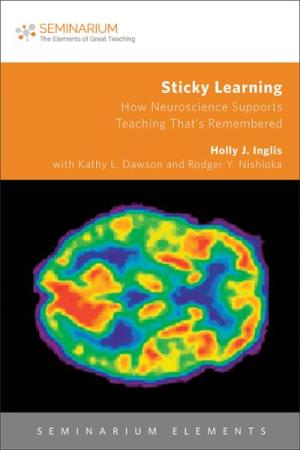
Click Here for Book Review Abstract: Despite the introduction of new technologies for classrooms, many seminary courses still utilize primarily auditory methods to convey content. Course outcomes may include opportunities for learners to demonstrate knowledge and skills gained but may not include opportunities for learners to begin to embed knowledge and skills into their long-term memory. Educators are engaging with neuroscientists to reshape classroom practices, content delivery, curriculum design, and physical classroom spaces to enhance students’ learning and memory, primarily in elementary and secondary education. Why not in seminary education? An overview of how learning occurs in our brain, what the different types of memory are, and how memory is created serves as a framework for suggesting pedagogical tools. These brain-friendly tools are specifically applied to individual academic disciplines, enabling instructors to make concrete modifications in the structure and content of what is taught, making learning more ‘sticky.’ Inglis’s synopsis of the use of neuroscience in the classroom and suggested action is followed by a collaborative dialogue with Kathy L. Dawson and Rodger Y. Nishioka. Dawson and Nishioka provide practical commentary regarding the successful implementation of Inglis’s proposed approach. As a group, Inglis, Dawson, and Nishioka create a text that extends pedagogical innovation in inspiring but practical ways. (From the Publisher)
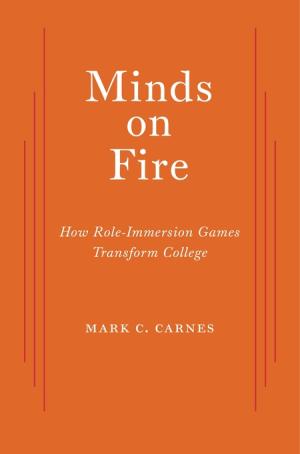
Click Here for Book Review Abstract: Why are so many students intellectually disengaged? Faculty, administrators, and tuition-paying parents have been asking this question for nearly two centuries. And the answer is always more or less the same: students are so deeply absorbed in competitive social play (fraternities, sports, beer pong, World of Warcraft, social media) that they neglect academics. In Minds on Fire, Mark Carnes shows how role-immersion games channel students’ competitive (and sometimes mischievous) impulses into transformative learning experiences. His discussion is based on interviews with scores of students and faculty who have used a pedagogy called Reacting to the Past, which features month-long games set during the French revolution, Galileo’s trial, the partition of India, and dozens of other epochal moments in disciplines ranging from art history to the sciences. These games have spread to over three hundred campuses around the world, where many of their benefits defy expectations. Students think more critically by internalizing alternative selves, and they understand the past better by filtering it through their present. Fierce competition between opposing sides leads to strong community bonds among teammates and develops speaking, writing, leadership, and problem-solving skills. Minds on Fire is a provocative critique of educational reformers who deplored role-playing pedagogies, from Plato to Dewey to Erikson. Carnes also makes an impassioned appeal for pedagogical innovation. At a time when cost-cutting legislators and trustees are increasingly drawn to online learning, Carnes focuses on how bricks-and-mortar institutions of higher education can set young minds on fire. (From the Publisher)
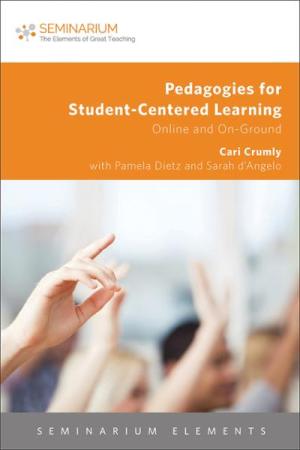
Click Here for Book Review Abstract: What comes to mind when you hear student-centered learning? Do you immediately see a classroom without a teacher? Do you see students teaching other students? How do you know which pedagogies to use when designing the best learning environment? The question of determining what pedagogies to use within the classroom (on-ground or virtual) can often plague teachers given today's student. This book will help you to identify the difference between teacher-centered and student-centered learning and the various pedagogies commonly associated with each. This book will draw upon the research and experience of three different educators and their pedagogical variations and uses within the classroom and online. Crumly’s synopsis of student-centered learning and suggested action is followed by a collaborative dialogue with Pamela Dietz and Sarah d'Angelo. Dietz and d'Angelo provide practical commentary regarding the successful implementation of Crumly's proposed approaches. As a group, Crumly, Dietz, and d'Angelo create a text that extends pedagogical innovation in inspiring but practical ways. (From the Publisher)